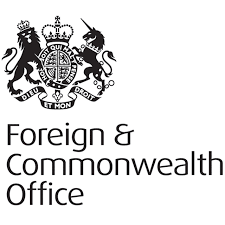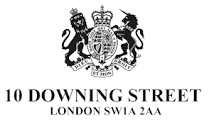PRESS RELEASE : ‘Retain and explain’ guidance published to protect historic statues [October 2023]
The press release issued by the Department of Culture, Media and Sport on 5 October 2023.
Guidance published to advise custodians facing calls for the removal of heritage assets in their care or ownership.
- Guidance published to advise custodians facing calls for the removal of heritage assets in their care or ownership
- ‘Retain and explain’ policy will see assets kept in place, accompanied by an explanation of their historical context
- Applies to custodians of all public memorials, including statues, monuments and commemorations
Custodians of heritage assets now have access to clear guidance on how to handle calls for their removal or relocation.
The new guidance, published today, follows consideration by the academics and heritage experts of the government-appointed Heritage Advisory Board on how custodians should approach and manage such requests.
This toolkit is intended to ensure that heritage decision-makers can access expert advice and good practice to support them to make better and more considered decisions with confidence when deciding how to deal with a heritage asset which may have become the focus of debate. This will help to avoid future occurrences of the hasty, forced, or ill-considered removal of contested assets.
Decision-makers may include owners, trustees or board members with care and custody responsibility for the asset in question.
The guidance applies to any statue or monument accessible to the public in the local community which faces calls for its removal or relocation on the grounds of changing views about the people or events it commemorates.
Removing heritage assets risks limiting our understanding of the difficult parts of our history, and of actions people took in the past, even if they may not be considered acceptable today.
The starting point for the guidance is for custodians to comply with the government policy to ‘retain and explain’ and keep assets in situ, but to complement them as necessary with a comprehensive ‘explanation’ which provides the whole story of the person or event depicted, so that a fuller understanding of the historic context can be known, understood and debated.
If, after assessing all the relevant evidence and following consultation and careful deliberation, custodians decide that this is not possible and seek to relocate the asset, they must follow the planning application process to do so.
The guidance confirms that the process of deciding how to deal with calls for the removal of a heritage asset should be rigorous, transparent and rooted in a comprehensive assessment of the person or event, not on partial interpretations. It also highlights that custodians have a responsibility to consider the views of those who cannot be consulted, such as past and future generations.
Culture Secretary Lucy Frazer said:
History is nuanced and complex. It is full of grey areas, which is what makes it so interesting and, of course, there are times when statues and monuments depict people or events that we very much disapprove of today.
At the same time, the UK has a proud history as an engine for progress, democracy and liberal values. That is why I want all our cultural institutions to resist being driven by any politics or agenda and to use their assets to educate and inform rather than to seek to erase the parts of our history that we are uncomfortable with.
Creative approaches to contextualising or explaining are also covered. The guidance highlights that ‘explaining’ need not be limited to a textual amendment and that alternative media and approaches can be used.
Also published today by Historic England are a set of case studies highlighting the variety of ways that ‘reinterpretation’ has already been put in practice for various contested heritage assets in the UK and elsewhere.
Duncan Wilson, Historic England’s Chief Executive said:
The case studies we have commissioned are designed to help custodians of historic places hold constructive discussions around uncomfortable and challenging aspects of our history. We hope they will be helpful in informing the process of interpreting and reinterpreting our shared heritage in a thoughtful, long-lasting and powerful way.
This guidance was prepared by the Department for Culture, Media and Sport (DCMS), working closely with Historic England, the government’s adviser on the historic environment, and overseen by a Heritage Advisory Board established by the former Secretary of State for Digital, Culture, Media and Sport in May 2021. It forms part of wider government action previously taken, to protect historical monuments from unwarranted removal by giving statutes legal protection so future generations can learn from their cultural and historical contexts.
Mukesh Sharma MBE, Northern Ireland Trustee of the National Heritage Memorial Fund said:
Being part of a multi disciplined team creating the Contested Heritage Guidance was a fulfilling experience, allowing me to apply my knowledge of handling multi-faceted contestation in Northern Ireland to wider discussion around how the heritage sector should respond to calls for statues and other memorials to be removed .
Dr Anna Keay, Director of the Landmark Trust:
Maintaining and caring for historic places is a big responsibility; we hope this guidance will be of assistance to owners and custodians in navigating conflicting views about their treatment and in offering broad and balanced interpretation.
Notes to editors:
- This guidance applies to any commemorative heritage asset (statue, monument, or commemoration) which is a structure, or is part of a building or structure, which is on public display or in places accessible to the public.
- The guidance does not include:
- museums’ and galleries’ collections, including objects on temporary or permanent display, or in storage.
- items that do not form part of a building or structure, items that may be in place on a temporary basis, or items that are part of an exhibition. This may include items owned by institutions that are subject to restitution claims. Guidance on restitution is published by Arts Council England.
- intangible forms of heritage such as dialects and dance.
- heritage assets outside England, as heritage is a devolved matter – although custodians of heritage assets around the UK may like to consult this guidance.
- Membership of the Heritage Advisory Board was determined by the then Secretary of State for Digital, Culture, Media and Sport in May 2021. The seven members included:
- Dr Anna Keay – Director, Landmark Trust
- Mukesh Sharma MBE – Northern Ireland Trustee of the National Heritage Memorial Fund
- Sir Laurie Magnus Bt. CBE – former Chairman, Historic England
- Sir Trevor Phillips OBE – Journalist and Broadcaster and former director of the Equality and Human Rights Commission
- Prof. Robert Tombs, Professor Emeritus of French History at the University of Cambridge
- Martha Lytton-Cobbold, President of Historic Houses
- Dr Samir Shah CBE, former Chairman of the Museum of the Home



